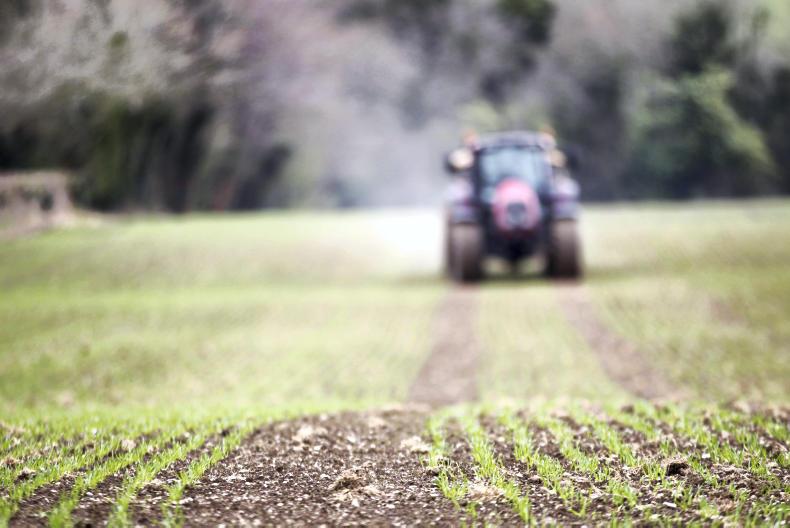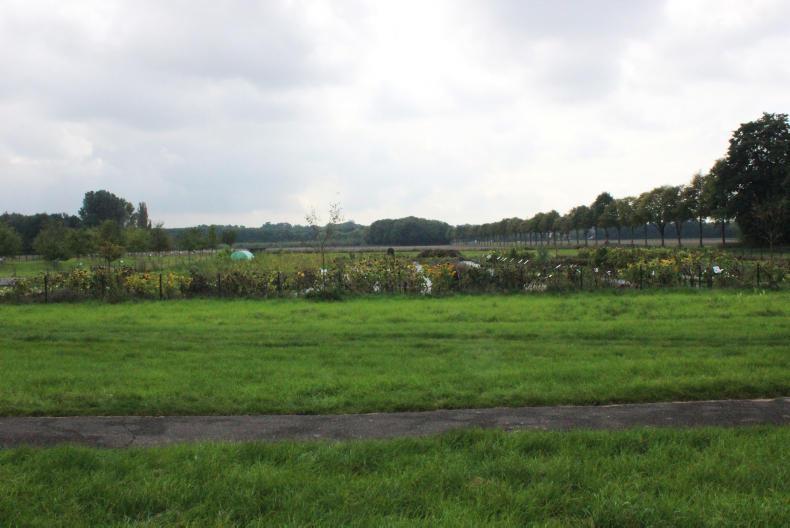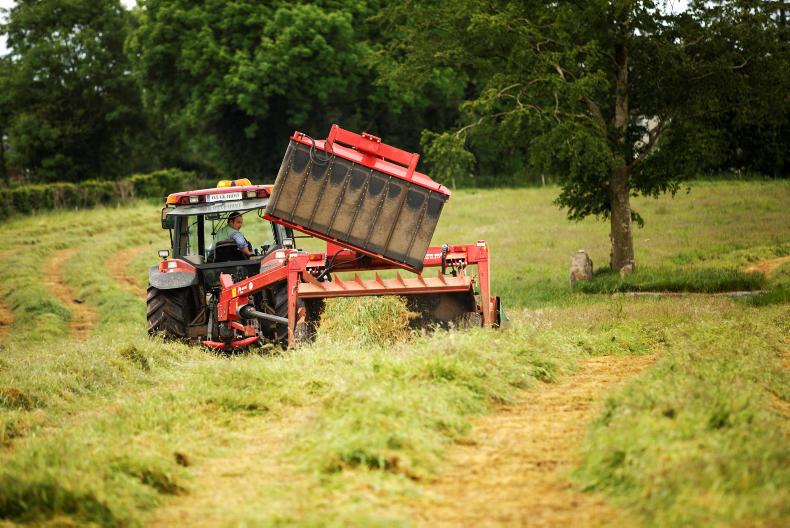The optimum amount of nitrogen (N) to apply to cereal crops varies considerably between different fields within a season and between the same field in different seasons.
Indeed, it has been shown that the optimum amount of N varies between different locations within the same field in a given season. This makes optimising nitrogen inputs to cereal crops notoriously difficult.
What's recommended?
Currently, a single rate of N is recommended for a range of sites deemed to be similar in nature and little account is taken of seasonal variation or within field variation.
In addition, the current recommendation system for nitrogen is based on factors that are determined before the growing season, such as previous crop history and previous yield levels; no account is taken of in-season factors that could change the requirement for N such as poor establishment, pest or disease issues or poor growth due to non-nitrogen nutrient deficiencies.
Scope
Given the large variation in optimum N that occurs between and within sites, there is considerable scope to make N recommendations more site-specific.
The use of sensors that measure the reflectance of light from a crop has the potential to assess the status of a crop during the season and determine if N should be applied.
While some sensors of this type are in commercial use, their potential under Irish conditions remains largely unexplored.
Sunlight comprises a range of wavelengths (or colours) of light, as evidenced by the range of colours present in a rainbow where the light is broken up into its component colours.
When light hits a crop, a significant proportion of the light is absorbed by the crop (to drive photosynthesis) but a proportion of the light is reflected back from the crop.
However, not all wavelengths (or colours) of light are reflected equally.
In general, healthy green crops reflect more green light than either red or blue light (hence, crops appear green to the eye) because the red and, to a lesser extent, blue light is absorbed by chlorophyll for photosynthesis.
As well as the visible colours, the incoming light has a range of wavelengths invisible to the human eye.
An example is near infra-red (NIR) light which is mostly reflected by crops and the more crop biomass that is present the more NIR is reflected. It can be seen then that by measuring differences in reflection of different wavelengths of light, we can build up a picture of the crop which can potentially be used to guide management.
Sensors
A range of sensors for measuring light reflectance from crops are available, some for many years. For example, reflectance sensing of vegetation using sensors carried on satellites has been carried out since the seventies.
In recent years, these sensors have become smaller, more sophisticated and less expensive and there is increased interest in their use for crop management. They can be carried on a range of platforms such as satellites, planes, tractors or can be handheld. More recently, reflectance sensors carried by drones have become popular. Each platform has its pros and cons. For example, while satellite systems can cover large areas in a short period they are unable to measure reflectance under cloud making them of limited use under Irish conditions. Tractor-mounted sensors offer the opportunity to vary fertiliser application as the crop is sensed but usually only a small area of the overall crop is sensed.
Drones
Drone-mounted sensors can cover large areas in relatively short time periods but they can be limited by environmental conditions (wind, rain and rapidly changing light conditions) and there is a delay between the time of sensing and the production of a prescription map.
Current work at Teagasc Oak Park is exploring the potential of sensors to:
Determine how consistently sensors can detect nitrogen deficiency/excess.Identify optimum timing of reflectance measurements to detect nitrogen deficiency/excess.Determine if sensor readings can be used to indicate N application rate. Much of the work is focused on barley, both winter and spring, as there has been relatively little work carried out internationally on the usefulness of sensors to indicate N inputs to barley and because N management is critical in the production of malting barley.
Both drone based and handheld sensors are being used in the initial work, which is being conducted at small plot scale.
In the future, it is hoped to be able to test the robustness of commercially available systems for Irish crops at field level on-farm.
Read more
Focus supplement: Crops and cultivation
The optimum amount of nitrogen (N) to apply to cereal crops varies considerably between different fields within a season and between the same field in different seasons.
Indeed, it has been shown that the optimum amount of N varies between different locations within the same field in a given season. This makes optimising nitrogen inputs to cereal crops notoriously difficult.
What's recommended?
Currently, a single rate of N is recommended for a range of sites deemed to be similar in nature and little account is taken of seasonal variation or within field variation.
In addition, the current recommendation system for nitrogen is based on factors that are determined before the growing season, such as previous crop history and previous yield levels; no account is taken of in-season factors that could change the requirement for N such as poor establishment, pest or disease issues or poor growth due to non-nitrogen nutrient deficiencies.
Scope
Given the large variation in optimum N that occurs between and within sites, there is considerable scope to make N recommendations more site-specific.
The use of sensors that measure the reflectance of light from a crop has the potential to assess the status of a crop during the season and determine if N should be applied.
While some sensors of this type are in commercial use, their potential under Irish conditions remains largely unexplored.
Sunlight comprises a range of wavelengths (or colours) of light, as evidenced by the range of colours present in a rainbow where the light is broken up into its component colours.
When light hits a crop, a significant proportion of the light is absorbed by the crop (to drive photosynthesis) but a proportion of the light is reflected back from the crop.
However, not all wavelengths (or colours) of light are reflected equally.
In general, healthy green crops reflect more green light than either red or blue light (hence, crops appear green to the eye) because the red and, to a lesser extent, blue light is absorbed by chlorophyll for photosynthesis.
As well as the visible colours, the incoming light has a range of wavelengths invisible to the human eye.
An example is near infra-red (NIR) light which is mostly reflected by crops and the more crop biomass that is present the more NIR is reflected. It can be seen then that by measuring differences in reflection of different wavelengths of light, we can build up a picture of the crop which can potentially be used to guide management.
Sensors
A range of sensors for measuring light reflectance from crops are available, some for many years. For example, reflectance sensing of vegetation using sensors carried on satellites has been carried out since the seventies.
In recent years, these sensors have become smaller, more sophisticated and less expensive and there is increased interest in their use for crop management. They can be carried on a range of platforms such as satellites, planes, tractors or can be handheld. More recently, reflectance sensors carried by drones have become popular. Each platform has its pros and cons. For example, while satellite systems can cover large areas in a short period they are unable to measure reflectance under cloud making them of limited use under Irish conditions. Tractor-mounted sensors offer the opportunity to vary fertiliser application as the crop is sensed but usually only a small area of the overall crop is sensed.
Drones
Drone-mounted sensors can cover large areas in relatively short time periods but they can be limited by environmental conditions (wind, rain and rapidly changing light conditions) and there is a delay between the time of sensing and the production of a prescription map.
Current work at Teagasc Oak Park is exploring the potential of sensors to:
Determine how consistently sensors can detect nitrogen deficiency/excess.Identify optimum timing of reflectance measurements to detect nitrogen deficiency/excess.Determine if sensor readings can be used to indicate N application rate. Much of the work is focused on barley, both winter and spring, as there has been relatively little work carried out internationally on the usefulness of sensors to indicate N inputs to barley and because N management is critical in the production of malting barley.
Both drone based and handheld sensors are being used in the initial work, which is being conducted at small plot scale.
In the future, it is hoped to be able to test the robustness of commercially available systems for Irish crops at field level on-farm.
Read more
Focus supplement: Crops and cultivation










SHARING OPTIONS